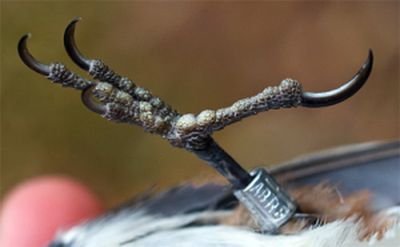

MedFriendly®


Anisodactyly
Anisodactyly usually means unequal length of
corresponding fingers. For example, if the
middle fingers of both hands were unequal in
length, this would be anisodactyly. The same
holds true for size differences in the
corresponding thumbs, index fingers, ring
fingers, and pinky fingers. Anisodactyly can
also refer to the most common arrangement of
digits in birds, in which the first toe is directed
backwards and the other three toes are
directed forwards.
Anisodactyly in birds.
FEATURED BOOK: National Geographic Backyard Guide to Birds
This is why some birds (e.g., eagles, hawks, and flacons) are referred to as anisodactyls
although here the term does not refer to unequal corresponding figures but an unequal
distribution of fingers on each foot. The toe directed backwards is most commonly
referred to as the hallynx or hallux and it varies in length significantly across the species.
In birds, a related arrangement to anisodactyly is syndactyly. Syndactyly is similar to
anisodactyly in birds except that the third and fourth toes or three toes are fused
together. In humans, syndactyly refers to two or more fingers or toes are fused together.
Anisodactylous means pertaining to anisodactyly. Anisodactyly comes from the Greek
word "an" meaning "not," the Greek word "isos" meaning "equal," and the Greek word
"daktylon" meaning "finger." Put the words together and you have "not equal fingers."
"Where Medical Information is Easy to Understand"™















